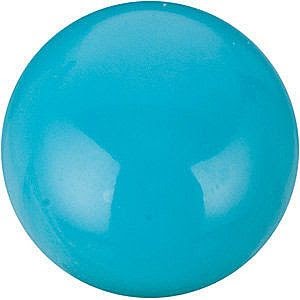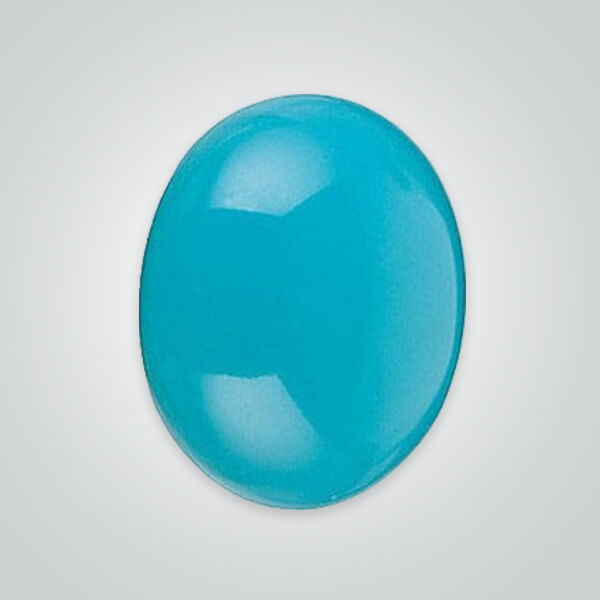Blue Turquoise
Natural Turquoise, Marquise Cabochon
GEMSTONE DETAIL Dimensions: 4x2mm to 8x4mm Grade: AAA Clarity: Opaque Shape: Marquise Make: Very Good Symmetry: Very Good Treatment: Impregnated Color: Distinguished Bright Light Blue Color Cut: Good
$21.60 – $25.20Select options This product has multiple variants. The options may be chosen on the product page
Natural Turquoise, Marquise Cabochon
GEMSTONE DETAIL Dimensions: 4x2mm to 8x4mm Grade: AAA Clarity: Opaque Shape: Marquise Make: Very Good Symmetry: Very Good Treatment: Impregnated Color: Distinguished Bright Light Blue Color Cut: Good
$21.60 – $25.20Select options This product has multiple variants. The options may be chosen on the product page
Natural Turquoise, Oval Cabochon
GEMSTONE DETAIL Dimensions: 5x3mm to 14x10mm Grade: AAA Clarity: Opaque Shape: Oval Make: Very Good Symmetry: Very Good Treatment: Impregnated Color: Distinguished Bright Light Blue Color Cut: Good
$15.60 – $189.00Select options This product has multiple variants. The options may be chosen on the product page
Natural Turquoise, Oval Cabochon
GEMSTONE DETAIL Dimensions: 5x3mm to 14x10mm Grade: AAA Clarity: Opaque Shape: Oval Make: Very Good Symmetry: Very Good Treatment: Impregnated Color: Distinguished Bright Light Blue Color Cut: Good
$15.60 – $189.00Select options This product has multiple variants. The options may be chosen on the product page
Natural Turquoise, Round Cabochon
GEMSTONE DETAIL Dimensions: 2mm to 6mm Grade: AAA Clarity: Opaque Shape: Round Cut Make: Very Good Symmetry: Very Good Treatment: Impregnated Color: Distinguished Bright Light Blue Color Cut:
$18.00 – $24.50Select options This product has multiple variants. The options may be chosen on the product page
Natural Turquoise, Round Cabochon
GEMSTONE DETAIL Dimensions: 2mm to 6mm Grade: AAA Clarity: Opaque Shape: Round Cut Make: Very Good Symmetry: Very Good Treatment: Impregnated Color: Distinguished Bright Light Blue Color Cut:
$18.00 – $24.50Select options This product has multiple variants. The options may be chosen on the product page

Blue Turquoise
Turquoise
Nanosital is an optically transparent polycristalline material that is formed by the crystallization of glass with corresponding chemical composition and has higher physical and chemical properties than the original glass.
Nanosital is one of glass-ceramic materials, which are known for more than 50 years and have a wide range of compositions and applications. As a result a multi-component high temperature composition on the base of two main oxides Ð SiO2 and Al2O3 Ð was obtained. It is well-known that the above-mentioned oxides are key components of most natural gemstones. The rest of nanosital’s components are picked to approximate the maximum required optical characteristics as well as density and hardness. Our technology allows us to vary components of composition quite widely. As a result nanosital that is absolutely identical to its natural counterpart can be produced each time.
Nanosital does not contain any health hazardous contaminants (lead, arsenum, cadmium)
It does not change color when heated. Can be used in wax casting
Main characteristics of Nanosital
Nanosital’s specific gravity index is very close to that of the most valuable gemstones such as topaz, sapphire, ruby and aquamarine.
Nanosital and the optical properties of the most popular color gemstones are almost similar. Nanosital’s main feature is its lack of an unnaturally strong lustre, which is typical of cubic zirconia, wherein the play of colors remains attractive.
Nanosital’s hardness (7 on Mohs scale) guarantees jewellery durability without the loss of its original look. The Nanosital hardness index (7) is higher than glass (5), but lower than one of the hardest materials Ð corundum (9).
Its high melting point allows the use of any colored Nanosital in lost-wax casting.
Color and transparency. Its wide color range, full correspondence to natural analogue, perfect optical properties, total transparency, and absence of inner defects makes Nanosital the best, readily available rough jewellery material on the market.
History
Turquoise is a rare mineral that appears in an opaque, blue and green shade. It is a form of copper and hydrated aluminum phosphate. The Ancient Egyptian named Turquoise “Mefkat” literally means “joy and also “delight.”
Origin of Turquoise
Turquoise was probably among the gems that were mined from early times. Mostly the mining takes place with hands only or sometimes with little to no use of mechanisms. Moreover, they recover as a by-product of the large-scale mining operations of copper.
How is Turquoise formed?
The formation of the Turquoise deposits is perhaps in done more ways. Nonetheless, a conventional turquoise deposit proceeds with the copper sulphides hydrothermal deposition. This occurs when hydrothermal fluid drains away copper from the hosting rock. A host rock typically intrudes the calc-alkaline rock with somewhat oxidized silica content in moderate to high levels. Then, the copper gets re-deposited in high concentration as copper porphyry, in which copper sulphide veins jam the fractures in the rock. The deposition mainly arises in the zone of the potassic alteration.
Turquoise is a supergene mineral that does not remain in the real copper porphyry. It forms through the percolating of the meteoric water to the copper porphyry. The dissolved oxygen present in the water oxidizes the minerals to soluble sulphates. Following this, the solution reacts with other minerals present in the host rock to accelerate Turquoise finally.
Where is the Turquoise found?
Turquoise stones are greatly found in Sinai, Iran and United States. Most specifically, the Southwest part of the United States is rich in sources of these stones. Regions of California, Arizona, New Mexico and Nevada produce maximum Turquoise minerals.
What are the Characteristics of Turquoise?
Chemical Formula: CuAl6(PO4)4(OH)8·4H2O
Crystal System: Triclinic
Crystal Habit: Massive/nodular
Hardness: 5 to 6 (Mohs scale)
Specific gravity: 2.6 to 2.9
Optical Properties: Biaxial (+)
Birefringence: +0.040
Turquoise Colour Variety
Turquoise stones are available in turquoise, green, blue and blue-green shades.
Turquoise Clarity and Lustre
Turquoise cabochons display a conventional matrix pattern. The lustre of this gemstone varies from waxy to a bit sub-vitreous.
Turquoise Cut
Though this stone is mostly cut into cabochons and beads, it can get carved on demand.
Turquoise Treatment
Turquoise does not remain unaffected by the treatment. It gets treated to increase its hardness and colour. In addition, the treatment helps to decrease the porosity.
Turquoise Zodiac Birthstone
Sagittarius
Turquoise and Chakras
Turquoise aligns with the Throat Chakra to heal almost all the problems of that body part. From respiratory problems, sore throat to allergies and other ailments that pass through the nose, ears, throat and also lungs, Turquoise can heal them all.
What are the benefits of Turquoise?
Turquoise gives power, vigour, and positive vibrations without any cease. It centres the soul towards positive energy. It is ideal for those who wish to inherit serenity, wisdom, joy and courage.
What jewellery is Turquoise suitable for?
Turquoise is suitable for making a variety of jewellery styles such as rings, bracelets, necklaces, etc.







